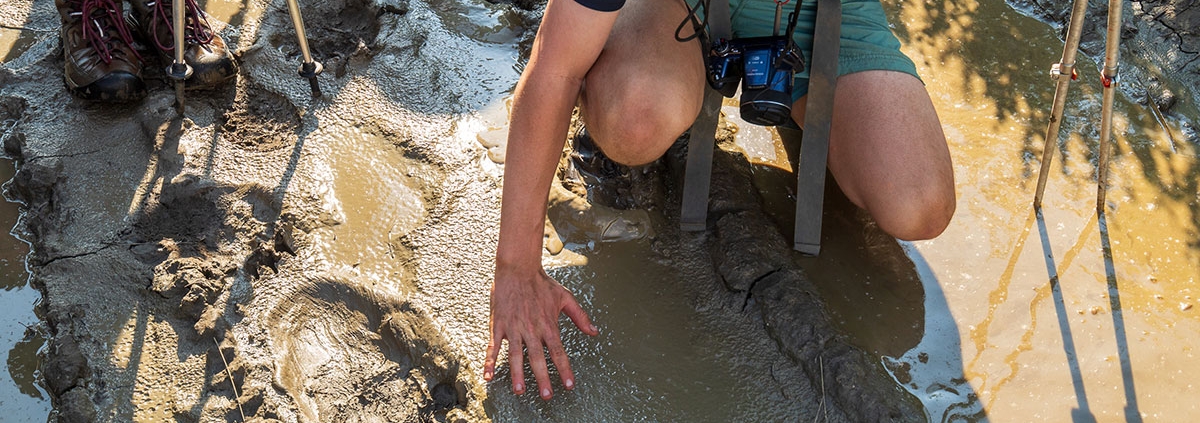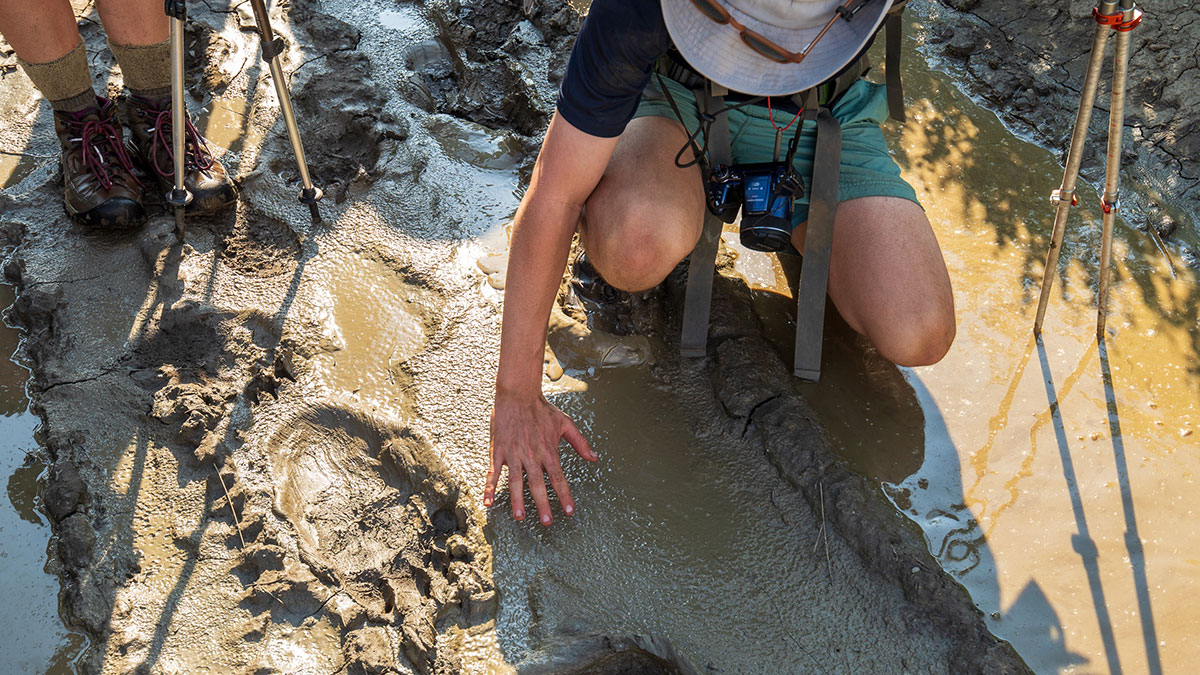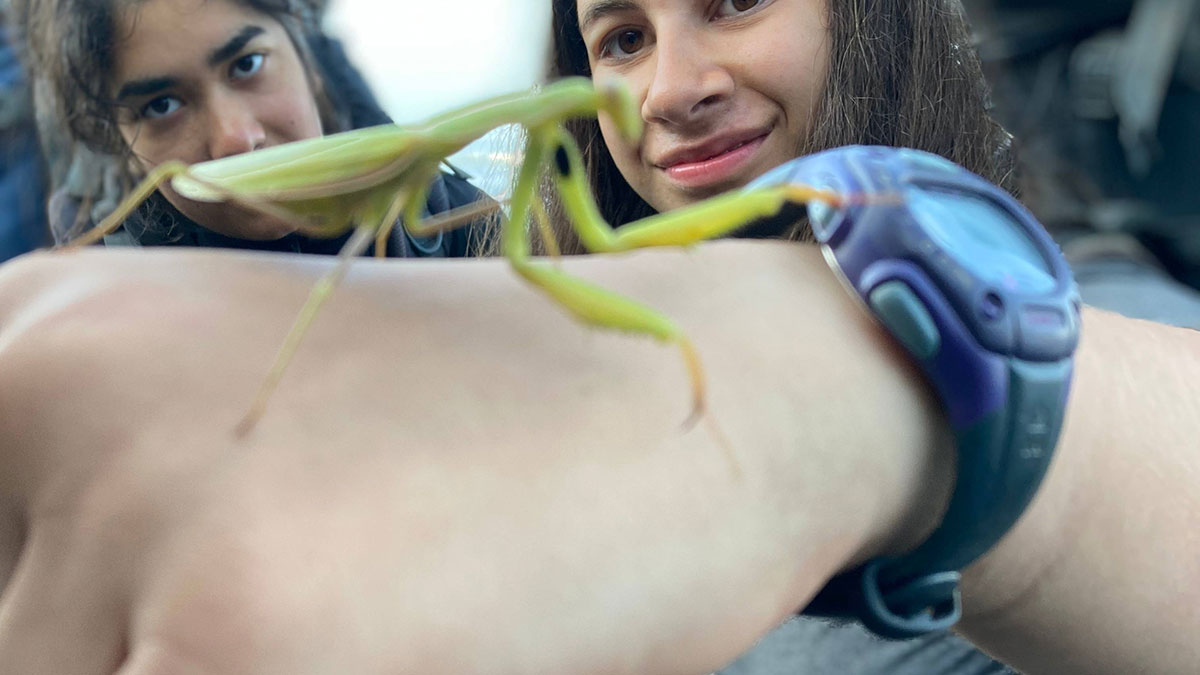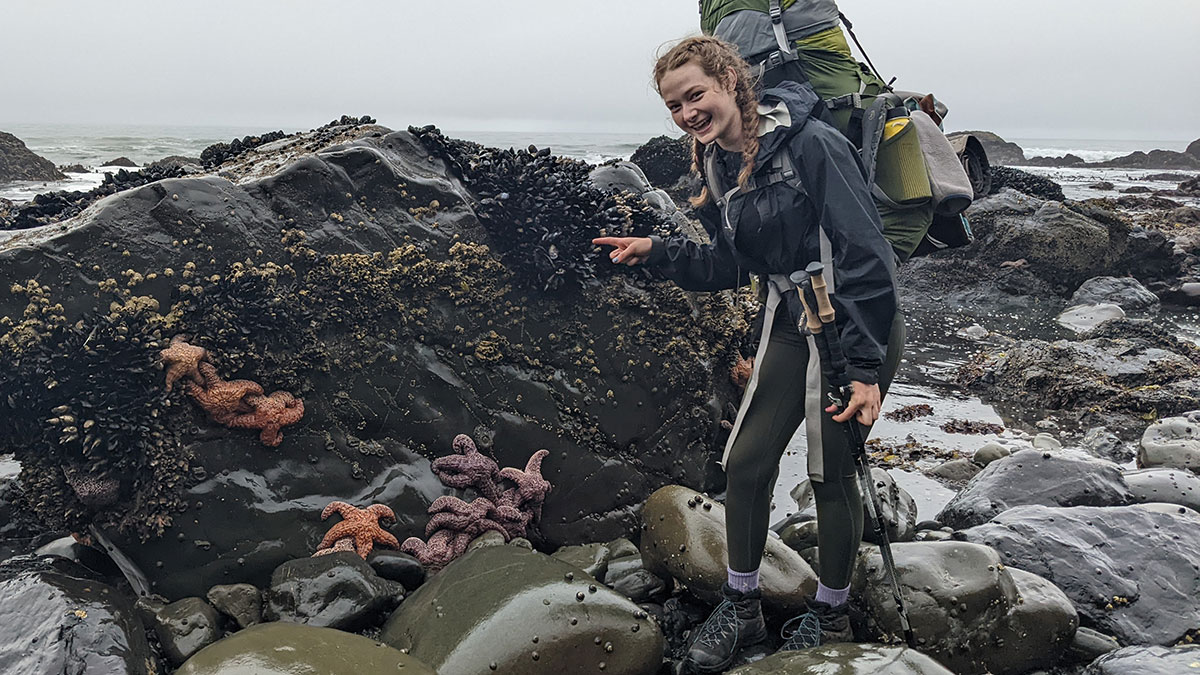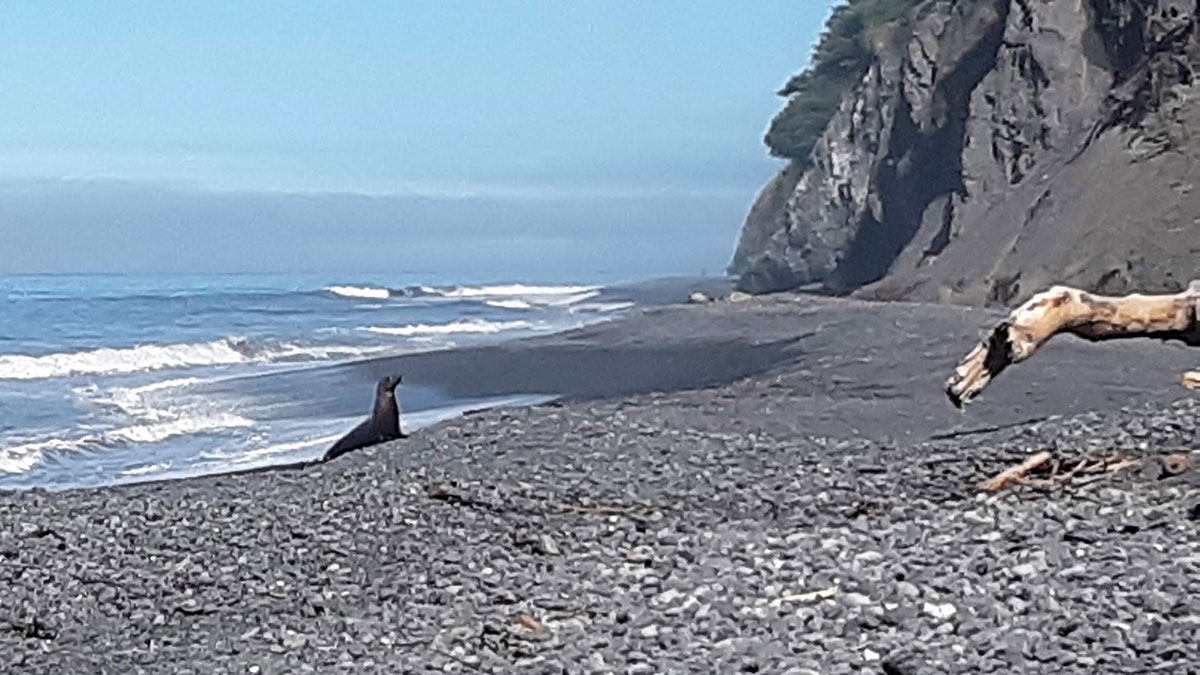Encountering Wildlife at Adventure Treks
Encountering wild animals is one awesome part of exploring natural spaces. All of the beautiful parks, forests, and coastal habitats you’ll adventure in with AT are home to animals first—we are just visitors! Crossing paths with wildlife is usually exciting and a great opportunity to learn something new, but it might also be one reason you or your friends are nervous about your trip. Let’s talk about it!
What kind of wildlife might we encounter on an AT trip?
You might see a new type of animal every few days on your trip! Every region we visit has a variety of birds, squirrels, deer and other mammals, fish, and reptiles that you’re likely to spot. In Yellowstone National Park, bison roam everywhere, and you might see a bighorn sheep or moose. In California, you’ll likely see elephant seals on the Lost Coast, black bears in the Trinity Alps Wilderness, and perhaps a river otter while rafting. Moose and caribou are common in Alaska, and the Pacific Northwest is full of bald eagles and banana slugs.
Sometimes, animals are more comfortable roaming around at night, and you’ll see them during evening meeting or if you stay up late to stargaze. Rabbits, deer, owls, opossums, bats, racoons, and many types of frogs are more likely to be out and about around the edges of the day; they are nocturnal or crepuscular, which means most active at dawn and dusk. There are also many animals you are very unlikely to see because of low population density or avoidance of humans. Skunks, foxes, whales (and most large sea life), mountain goats, bears, snakes, and pika are some of the animals that share the spaces we travel in but which are very rarely seen!
I’m afraid of bears! I’m afraid of snakes!
That’s OK! A lot of people are afraid of animals that are potentially dangerous to humans. It is important to remember that the animal attacks in movies and books are extra dramatic to keep you entertained, but are actually extremely rare.
While snakes are scary to many, they have fascinating characteristics that keep them safe from humans—and us safe from them. For example, they don’t have ears, but instead “hear” vibrations through the ground and the air. When a group of 10 people comes hiking up a trail, snakes feel us coming and move out of the way quickly. Most snakes also don’t want to bite you. Whether they have venom, they need to save their energy and tools to capture animals they can actually eat, like mice and small birds.
Black bears are normally very wary of people and steer clear of us. They might exhibit defensive behavior if they feel threatened, which may happen if they are surprised, separated from their cubs, or protecting a food source. While it is possible to startle a bear, that is unlikely to happen when you are traveling in a group, playing games with each other, and singing songs (sounds like an AT backpack to me!). This is why we intentionally make a lot of noise while hiking—it’s one of the best tools we have to prevent an animal encounter.
Additionally, we never keep food sources in our around our tents; we safely store anything that a bear (or any other animal) might perceive as food (this includes any “smelly” item like toothpaste or deodorant) in bear-proof canisters and away from where we sleep.
How does practicing Leave No Trace principles apply to wildlife encounters?
You’ll hear a lot about the seven principles of Leave No Trace ethics with Adventure Treks, one of which is “respect wildlife.” In addition to making noise to try to prevent encounters, we’ll also plan ahead in other ways, like the aforementioned food storage containers, bear fences, traveling in groups when in the backcountry, and educating our students and instructors on animal safety and what to do in the event of an encounter.
Respecting wildlife also includes being kind to animals. While offering food to wild animals is an easy way to get closer to them, it teaches the animals that humans are a source of food and increases negative interactions between people and wildlife over time. People are also much more likely to provoke an animal’s defense mechanisms by getting too close—which is why we never feed wildlife. While hiking on the Lost Coast, for example, there are signs that ask you to stay at least 200 feet away from the elephant seals. By respecting their space, you are much less likely to have a scary close encounter.
As a parent, do I need to worry about my child in a place where there are grizzly bears and other potentially dangerous wildlife?
Rest assured that regardless of the area, Adventure Treks instructors will go into great detail about the variety of wildlife that are present in our surroundings and all of the plans in place to prevent any interaction with them. Students will learn what to do in case of an encounter, and the group will practice safety protocols at all times so that everyone feels confident. Encountering wildlife from a safe and respectful distance should be an exciting part of an AT trip, not a nerve-wracking one!

